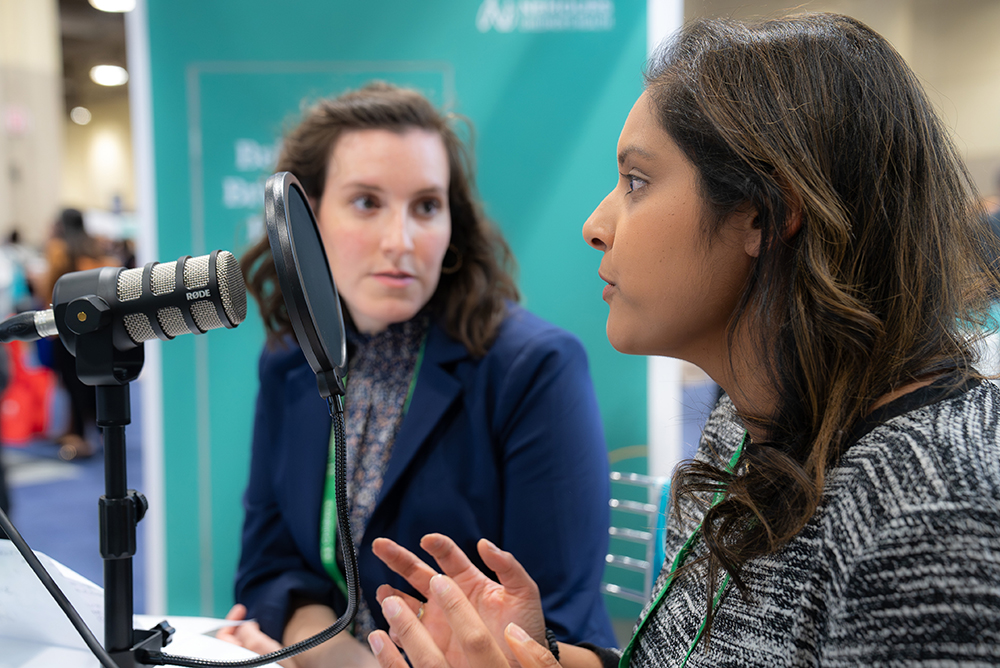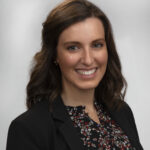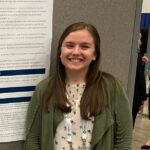Social determinants of health (SDoH) are non-medical factors that affect health outcomes and quality of life. Much attention and work is focused on examining SDoH and creating pathways to improve them, with the ultimate goal of optimizing wellness for everyone. In this episode, we’ll take a look at two such pathways.
SEGMENT 1: A paper published in the Journal of Pediatrics examined disparities in vision screening in primary care for young children with autism spectrum disorder (ASD). Drs. Kimberly Hoover, Brittany Perry and Matthew DiGuglielmo from Nemours Children’s Health co-wrote the paper, and Drs. Hoover and Perry are here to discuss their findings — and what comes next.
SEGMENT 2: Advocacy Rounding is a new concept being piloted in the pediatric residency program at Nemours Children’s Health, Delaware. It’s being done in response to a goal set by the Accreditation Council for Graduate Medical Education (or ACGME) that encourages residents and fellows to become better acquainted with patient advocacy and SDoH during their training — and it’s proving fruitful so far.
Guests:
Brittany Perry, DO, Clinical Assistant Professor, Primary Care Pediatrician, Nemours Children’s Health, Delaware
Kimberly Hoover, MD, General Medicine Resident, Nemours Children’s Health, Delaware
Kanika Gupta, MD, Inpatient Pediatrics, Associate Program Director, Pediatric Hospital Medicine Fellowship, Nemours Children’s Health, Delaware
Sarah J. Calardo, DO, M.Ed Hospital Medicine Resident, Nemours Children’s Health, Delaware
Host/Producer: Carol Vassar
EPISODE 82 TRANSCRIPT
Carol Vassar, podcast host/producer:
Welcome to Well Beyond Medicine: The Nemours Children’s Health Podcast. Each week we’ll explore anything and everything related to the 80% of child health impacts that occur outside the doctor’s office. I’m your host, Carol Vassar. And now that you’re here, let’s go.
Music:
Let’s go well beyond medicine.
Carol Vassar, podcast host/producer:
On the Well Beyond Medicine Podcast, we talk a lot about the social determinants of health (SDOH): the non-medical factors that affect health outcomes and quality of life. There is so much attention being paid and so much work being done to examine SDOH and to create pathways to improve them, with the ultimate goal of promoting wellness for everyone. In this episode, we’ll take a look at two such pathways.
In a few minutes, we’ll hear about advocacy rounding: what it is, how it works, and why it’s being incorporated into residency training. But first: a paper published in 2023 in The Journal of Pediatrics examined the disparities in vision screening in primary care for young children with autism spectrum disorder or ASD. The findings in this study are enlightening and a bit disheartening, especially to those of us with children whose diagnosis includes ASD. Doctors Kimberly Hoover, Brittany Perry, and Matthew Di Guglielmo from Nemours Children’s Health co-wrote this paper, and doctors Hoover and Perry joined me recently to discuss their findings and what comes next. Dr. Kimberly Hoover gets us started.
Dr. Kimberly Hoover, Nemours Children’s Health:
The idea behind this study really stemmed from seeing children in developmental medicine, autistic children, who had never had a vision screen. Some of them were six, seven, eight years old, and they never had screening. And vision screening is routine in primary care. The American Academy of Pediatrics recommends photo screening starting at 12 months of age through three years of age if available and direct visual acuity screening for four and five years of age.
And so we were seeing that a lot of kids were not getting vision screenings in developmental medicine. And so we wanted to look at this further. And so we used a PEDSnet database and we took information from that database and we looked at autistic children that were three to five years of age compared to children without autism who were getting routine well childcare and we looked at the rates of vision screening.
And what we found was there was reduced vision screening rates in autistic children compared to children without autism. And there were healthcare disparities within that, and that Black children were screened much less frequently than white children.
Carol Vassar, podcast host/producer:
Let me back up a moment. You mentioned two different kinds of screenings. One was photo screening, which is what?
Dr. Kimberly Hoover, Nemours Children’s Health:
That is where you use a machine to take a picture of the eyes and it can detect any sort of vision abnormalities. It is not a test of direct visual acuity.
Carol Vassar, podcast host/producer:
And the other is the basic test of over the eye, can you see the big A at the top? Can you see the middle chart C at the bottom? The eye chart. That. And what you learned was actually very disheartening if you think about it. There are a lot of children out there who are being missed with regard to their eyesight. So, what factors have contributed to these disparities in vision screening for children with ASD? In that primary care setting, you would think that kid comes in, there are certain things you do. Eye screening is one of them. Why are they not being screened?
Dr. Kimberly Hoover, Nemours Children’s Health:
Our work didn’t specifically look at why children were being screened, which is actually a project we’re hoping to do next, looking individually at patients’ charts to answer that question of why they were not screened. But some prior research has shown with interviews of staff members in primary care offices feeling limited on time as a reason, behavioral issues, children not being verbal and being unable to complete the visual acuity tests, not being able to say their shapes or their letters in order to do the test.
But we’re hopeful that the photo screen takes that element of behavior and language out of the picture to make it more equal for all of those children.
Carol Vassar, podcast host/producer:
Are there any specific challenges or barriers that primary care providers face when conducting vision screenings for children with ASD? I think Dr. Hoover alluded to that earlier. Talk about that.
Dr. Kimberly Hoover, Nemours Children’s Health:
I think some of the barriers to screening autistic children with ASD would include language differences that these children have, first of all. In order to do a visual acuity test, you have to be able to look at the chart, recognize numbers or letters or shapes, and be able to say those letters, numbers, or shapes back to the provider doing the screen. So that is one barrier. Another barrier I think is just time that we have in the office. Our visits are short.
And so if you’re dealing with a child that has behavioral difficulties and it’s taking a little bit to calm them down and get them to be able to sit still for the test, it can take time away from the rest of the visit. So, sometimes, it is ultimately deferred. But one question that we couldn’t look at in this study was if children that were not being screened were referred for further testing or for follow-up testing. So I think that is one avenue we have. If we’re not able to screen a child, just to refer them to a professional eye care provider.
Carol Vassar, podcast host/producer:
What strategies can be implemented so that we can improve vision screening rates for kids with ASD, especially in that primary care setting that’s so important? Dr. Perry.
Dr. Brittany Perry, Nemours Children’s Health:
Well, I think what we saw in our previous study was that by using photo screening, instrument-based screening, which is a quick and easy test to administer, you basically take a picture of the eyes, that actually reduced disparity and increased the total rate of vision screening in Hispanic children. So we know if we can do further uptake of photo screening in practices, we be reducing healthcare disparity for autistic children for vision screening.
Carol Vassar, podcast host/producer:
Let’s talk about socioeconomic factors. Can that influence access to children with ASD?
Dr. Kimberly Hoover, Nemours Children’s Health:
I think yes, it definitely can influence. We did look at insurance status in our study, but we weren’t able to directly measure socioeconomic status in this study based on the data we could pull from PEDSnet. I think a big thing with socioeconomic status, too, is thinking about these are children who showed up to their primary care visits who weren’t being screened, but we’re not capturing the children who maybe don’t have insurance and are unable to come to the doctor at all. So there’s a lot of work to be done there.
Carol Vassar, podcast host/producer:
Let’s talk about your study. You took the data from PEDSnet. The information, the conclusions that you came to were that kids are not being screened, especially if they’re ASD. What do you want to see done with this information? What are next steps?
Dr. Brittany Perry, Nemours Children’s Health:
I think one of our goals was just awareness, recognizing we wanted to get this information out to parents and also to providers because we need to recognize there is a disparity here. We’re not screening autistic children as frequently as we are kids without autism, and they deserve the same routine screenings that are recommended by the American Academy of Pediatrics.
So, just increasing awareness can help us individually in our practices be aware that, “I’m seeing a child with autism today. I need to make sure that they have vision screens. And if they cannot complete the vision screening, they should be referred for an eye exam.” And I think that’s the key. And then empowering parents. I talk about this a lot in developmental medicine.
When I’m seeing a young autistic child, I say, “Your child should be due for vision screening at their upcoming well visit. If your child is not able to complete the screening, I want your child to get an eye exam.” And let the parents feel empowered to make sure that their childs’ getting their routine screenings.
Carol Vassar, podcast host/producer:
The doctor told me to do it; I’m going to go do it. Is there a primary care provider education component that you would like to see move forward, Dr. Hoover?
Dr. Kimberly Hoover, Nemours Children’s Health:
I definitely think there is an education piece reminding providers of the American Academy of Pediatric recommendations for vision screen. I also know at our resident clinic, we only recently acquired the ability to use photo screening, and it’s becoming more popular across the country, so also just educating providers and empowering providers on how to use a photo screen and how to interpret the results that you get from that screen would be helpful.
Carol Vassar, podcast host/producer:
Now that we know there’s a disparity, what next? What would you like to see in a perfect world?
Dr. Brittany Perry, Nemours Children’s Health:
In a perfect world, every child, regardless of if they’re autistic, if they are a different race or ethnicity, they should all get routine vision screening. Every child deserves to have access to routine vision screening and primary care. It’s a standard of care, and we need to continue to do our diligence and practice to raise awareness and then to also advocate for this population so that they’re getting the appropriate screenings.
Carol Vassar, podcast host/producer:
Let’s talk about early detection and treatment of vision problems. If children are not coming in, if children are coming in and not having that screening, what’s the impact on their overall development and well-being, especially if they are children diagnosed with ASD, Dr. Hoover?
Dr. Kimberly Hoover, Nemours Children’s Health:
So, if they have an underlying visual structural problem such as strabismus, which is also known as a lazy eye, that can cause permanent vision damage that cannot be corrected later in life. The other issue that arises if children aren’t seeing, they’re farsighted or nearsighted, and they need glasses, and they can’t read the board in school, or they can’t read their book at home, it may be that we’re not seeing their true developmental potential because they need to be able to see to accomplish those next milestones.
Dr. Brittany Perry, Nemours Children’s Health:
One of the most positive outcomes from this work and just us sharing with families these recommendations is having a family come back to you and say, “I took my child to the eye doctor and my child needs glasses. We got glasses and now my child is reading more, has less behavioral outbursts in school.” So it’s really, really important that we’re acknowledging this healthcare disparity and working towards improving it.
Carol Vassar, podcast host/producer:
Do you have an example of somebody who’s gone to an eye doctor, and the kid comes back, the family comes back and says, “Wow, what a difference?”?
Dr. Brittany Perry, Nemours Children’s Health:
I actually often get Nemours app messages from families after their outcome of going to an eye doctor or getting a vision screening. One family that stands out in my head as I’m thinking about this said, “I remember the day that I went to my primary care pediatrician, and my son had a tantrum when they were doing the vision screening, and it didn’t get done. And so fast-forward a year and a half, you had recommended going to get his vision checked with an eye doctor, and we found out that our son needed glasses.”
And the mom said, “It never dawned on me that it wasn’t because my child didn’t want to do the vision screening, he couldn’t see.” So thinking about behavior as a form of communication and I think that that was just a prime example of why we’re doing the work that we’re doing. It’s all about awareness and educating others.
Carol Vassar, podcast host/producer:
Anything I haven’t asked that you’d like to share about the study, about the future, where are you going next?
Dr. Kimberly Hoover, Nemours Children’s Health:
I think one exciting next step, the new research that we’re working on now, is looking at a national database. The previous study we published was just looking at our center and our rates of vision screening, and now we are looking at six different sites across the country to see if it’s a more widespread problem. And the early data analysis is showing that across the country, autistic children are receiving less vision screens. So we really need more awareness.
Carol Vassar, podcast host/producer:
More to come, for sure. Dr. Kimberly Hoover is co-author of Disparities in Primary Care Vision Screening for Young Children With Autism Spectrum Disorder, which was published in 2023 in The Journal of Pediatrics. She was joined in conversation on that topic by her co-author, Dr. Brittany Perry.
Music
Carol Vassar, podcast host/producer:
You’ve heard of rounding, right? Clinical rounds, for example, that’s when a medical team meets to discuss inpatient cases and care plans.
There are also grand rounds at which clinicians examine the medical case of one or more patients as a means of education. Then, there are advocacy rounds. What’s that, you say? Well, it’s a new concept being piloted in the pediatric residency program at Nemours Children’s Health, Delaware. It’s in response to a goal set by the Accreditation Council for Graduate Medical Education or ACGME that residents and fellows become better acquainted with patient advocacy and the social determinants of health during their training.
Here to tell us more about advocacy rounds and the program they have created to implement them are Dr. Kanika Gupta, associate program director for the hospital fellowship medicine program at Nemours Children’s Health, Delaware, and Nemours Hospital Medicine fellow Dr. Sarah Calardo. So what exactly are advocacy rounds? Dr. Sarah Calardo is here to tell us.
Dr. Sarah Calardo, Nemours Children’s Health:
Advocacy rounds are a concept we designed to encompass and then help correct a problem that we saw in pediatric residencies, which is that we have this big goal from the ACGME to really focus on advocacy and residency education, and yet most of that focus is all in the outpatient world. And as hospitalists, we’re on the inpatient world, and we see tons and tons and tons of opportunities for resident learning in an advocacy space in our inpatient world. But there aren’t formalized inpatient curricula, and hospitalists themselves aren’t necessarily trained in advocacy.
And there’s this gigantic hole where we really incorporate our advocacy teaching and training and residency learning and then also patient care and making patient care better to really work together. And that’s what we were aiming to do with creating advocacy rounds. So advocacy rounds themselves in our concept is a paired thing with a discussion that’s about 15 to 20 minutes on the inpatient resident teams once or twice in a two-week resident inpatient block, on one to two patients of that team’s choosing, and it’s really resident-led, who they think really deserves a conversation.
And then it’s paired with the structured framework that we created called iSPEAC that Kanika can talk more about. That really pulls together concepts to teach that residency learning.
Carol Vassar, podcast host/producer:
Now, you mentioned the residents, it’s resident led, but who else participates in advocacy rounds and what’s the subject? What’s talked about that’s different than, say, rounds made by physicians and residents on patients?
Dr. Kanika Gupta, Nemours Children’s Health:
Anyone that’s on the inpatient team is welcome to participate. So it often includes medical students, pediatric residents, visiting off-service residents from different programs, case management, and social workers are also invited to participate. But this is really, like Sarah mentioned, resident-led. The tool that we talked about is called iSPEAC, and that’s really this of novel structured learning tool that really forms a framework to help teach and discuss those advocacy concepts.
And its goal really is to take patient specific advocacy concepts and then teach our residents and our pediatric trainees, faculty, anybody on the hospital medicine team to then extrapolate those concepts and then think about how to apply those on the wider population health.
Carol Vassar, podcast host/producer:
Give me examples of what you mean by the advocacy concept.
Dr. Kanika Gupta, Nemours Children’s Health:
Absolutely. So, this is the perfect time to explain our acronym. It’s little I and then big SPEAC. The S stands for social determinants of health. So, talking to our residents about what are the social determinants of health that are impacting this particular patient? How are we even screening for those social determinants of health in the inpatient setting? We know that there are lots of tools in the outpatient setting, but how are we gathering that information specifically for these inpatient pediatric patients?
The P stands for partnerships. So what are community resources that are already in place that may help this patient? A lot of the is state-specific, and a lot of that is county-specific as well. So it varies by location. And then really teaching our trainees to think if they had unlimited resources, so unlimited funding, time, lack of legal barriers, what partnership would they create that they think would best help their patient get to where they needed to be and positively impact health outcomes?
Carol Vassar, podcast host/producer:
So when we talk about social determinants of health, just to remind our audience, we’re talking about housing insecurity. We’re talking about food insecurity. We’re talking about lack of access to transportation to get to a doctor’s office, those kinds of things.
Dr. Kanika Gupta, Nemours Children’s Health:
Exactly. If they speak a different language than the primary language in the hospital, if they don’t have access to insurance, if they don’t have access to healthy food or even food stores in general, if they don’t have access for transportation to the hospital, those are all different social determinants that really impact their own health, and then that admission for that child at our hospital.
Carol Vassar, podcast host/producer:
Which makes so much sense. Had that not happened on the inpatient service before?
Dr. Kanika Gupta, Nemours Children’s Health:
It’s such a good question. It absolutely happens, and it’s incredible actually the resources we have at Nemours with our case management and our social workers who are so on top of this. My goal and our goal as a team was really to empower our residents to realize that instead of only knowing to consult case management appropriately or social work appropriately, they can be advocates for these patients as well.
And then the goal is really to improve future patients’ care by teaching them how to be advocates now while they’re in training so that they can go on and push that into their own training of future residents and future pediatricians to then help their patients ahead. So it’s a long-term goal, but really focusing on increasing their comfort levels in integrating advocacy concepts into their patient care.
Carol Vassar, podcast host/producer:
How did you determine this was a gap when it came to residency training?
Dr. Kanika Gupta, Nemours Children’s Health:
So in January of 2023, so going back over a year now, we did a needs assessment. We had done a literature review. We had looked at the fact that there seemed to be no inpatient advocacy curricula. There’s tons and tons of incredible longitudinal curricula at different programs, but not necessarily inpatient-focused.
And then we took that to our institution and did a needs assessment and interviewed or surveyed the residents in all the programs, so the PEDs, general PEDs residency, as well as the residents who were participating from med PEDs, and we have rehab ones and neurology ones as well, and had them fill out different questions, answered questions. And what we saw was there’s a ton of interest in advocacy. Our residents really see themselves as advocates for their patients, but there’s also a lack of knowledge.
And they’ve been trained in so many different advocacy topics, but none of that was done in the inpatient world. Most of it was didactics or outpatient. And then, even though they talk about advocacy or patients’ needs all the time on rounds, they’re not sure about the resources. So they asked us very specifically for tangible and actionable items to be trained upon and then how to find those resources and not just say, “Let me refer you to someone.” So that was our goal.
Carol Vassar, podcast host/producer:
Now, this may sound like an obvious question, but how do patients benefit and their families benefit from this kind of training of residents?
Dr. Sarah Calardo, Nemours Children’s Health:
As pediatricians, we are all advocates, so advocacy is just the most important part of what do.
Dr. Kanika Gupta, Nemours Children’s Health:
This specific tool is an educational tool, first and foremost. So our primary objective was how do we start teaching advocacy concepts in a thoughtful, systematic manner so that pediatric trainees can then take that baseline knowledge and then include it and adapt it when they go out practicing on their own or on the inpatient unit. One of the outcome measures that we looked at was whether these concepts were addressed and whether there were actionable items coming out of these discussions. And the answer from our surveys is absolutely and our patients were benefiting.
If that was things as simple as organizing letters of medical necessity, getting school and work letters, partnering our patients with a health legal partnership so that they could have legal representation for anything that they needed. And so our patients were definitely benefiting.
Dr. Sarah Calardo, Nemours Children’s Health:
And when we did the outcome measure and when we looked at our final data, 66% of our providers, so that’s medical students, residents, faculty, fellows, sometimes advanced practitioners as well, anyone on the team, 66% of them said there was absolutely reportable patient change or impact to patient care after doing advocacy rounds. And then those were exactly the examples that were offered, having in-person interpreters, scheduling meetings with those in-person interpreters who go over every single discharge planning, reaching out to their pediatricians outpatient as well.
Carol Vassar, podcast host/producer:
Now, I’m not certain if this has been part of the measure in this project, but how have families reacted to this?
Dr. Sarah Calardo, Nemours Children’s Health:
That’s such a good question and that’s going to be one of the next steps in the future. So, the families aren’t necessarily part of these advocacy rounds. This is really back in the room as residents in a learning environment where they can ask any questions they might have, look for these resources, practice going to them.
The next step I think will really be finding a way to have an actionable item that we can measure with families to see if they feel like they have more support now that the residents and the learners are also very involved in the participation piece. Right now I feel as though our families get such good care from the case managers and the social workers that they may not know that there’s even a full there.
Carol Vassar, podcast host/producer:
Now, this seems to me to be a pilot project. Have other residency programs done anything like this before, or is this kind of novel?
Dr. Kanika Gupta, Nemours Children’s Health:
As far as we know, this is novel. And as we talk about our next steps and our larger goal now that we have this initial very promising and rewarding data, one of our bigger goals as a group is really how do we involve other institutions? How do we start implementing this tool in a sustainable way.
Carol Vassar, podcast host/producer:
In terms of the reception from the residents, I think you went over that, but it seems like it’s been good. Do you think that this is scalable? I know you have plans to move this towards families, but is this scalable to other residency programs?
Dr. Sarah Calardo, Nemours Children’s Health:
That’s such a good question, and that was one of our goals as well is scalable and then sustainability. One of our balancing measures for this quality improvement project was resident and faculty attitude, is this worthwhile? And we had a 95% overwhelming response that they found this worthwhile. They found it useful for their time. So I think definitely the attitude and the hope for it to continue is there.
And now the next big step is making it doable in their days with busy censuses, I guess, and then really complex patients and high acuity. And so those three things make it hard to fit anything in your data side, patient care. One of our goals is how do we make this sustainable? And one of those options might be protective resident learning times to really have this be a part of the Nemours culture.
And then my goal would be let’s show that it works at a single site, and then let’s see what we can do at other hospitals as well by providing iSPEAC with a facilitator’s guide, so any hospitalists who aren’t trained in advocacy know how to walk through the steps by itself. It should be really, really self-explainable to anyone to make this benefit as well.
Carol Vassar, podcast host/producer:
As you look back on some of the rounds that have occurred, and without going into anything that might violate privacy, is there a case that you can think of the family, the child have really benefited from the extra steps that people have gone through to help advocate for them?
Dr. Sarah Calardo, Nemours Children’s Health:
One of the things that blew me away was reading our open responses in the surveys from different residents, students, and faculty who have done these advocacy rounds as well. And I think one of them that stood out to me was that the patient was still working on their documentation status.
Until the medical student was able to share that with the team and really have a conversation about, I don’t know how they’re going to reach those follow-ups because they don’t have not only insurance but even a way to get to those appointments, the team wasn’t able to think beyond let’s make them follow-up appointments and actually how do we help them survive and thrive here?
That’s just one patient, but that was mentioned on multiple surveys from that advocacy round, and I think that was both impactful for hopefully the family because they found actionable items for how to help them moving forward before they left the hospital and were out of our care, and then also hopefully impactful for everyone involved in those rounds too because they realized that the student knew so much about this patient and just needed to share it, but also that they got to talk about it and open their own eyes.
Carol Vassar, podcast host/producer:
I want to make that connection between the inpatient where this is happening and the outpatient.
Dr. Kanika Gupta, Nemours Children’s Health:
Things that are contributing to poor health outcomes, and how do we communicate those to continue the work done once the patient leaves the hospital? So, that is through medical legal partnerships. That is through communicating with outpatient pediatricians. Sometimes finding these patients outpatient pediatricians is one of the most impactful things that we can do for these patients. And then communicating with them and how do we teach our pediatric trainees how to coordinate care essentially.
Carol Vassar, podcast host/producer:
One final question and then I’m going to give you an opportunity to share anything we might not have covered. You mentioned the word equity and diversity. How does this influence that area where we find sometimes people’s outcomes, children’s outcomes are influenced unfortunately by their color or their race or their ethnicity or their sex? How do you think this will help elevate that so that they get the best care possible?
Dr. Sarah Calardo, Nemours Children’s Health:
I think one of the pieces of that that we wanted to really highlight and really focus on is that equity and inequity piece of our iSPEAC acronym. And one of the things it does and it asks our trainees to do, and it’s probably the hardest part of the whole framework, is really look within themselves and come up with which implicit biases they may have that they can say might have affected that patient and ask them to not just feel safe, but be brave enough to step forward and say, “This is an implicit bias. I could see how it could affect this patient. I know it might have affected my care for this patient. And what can I do moving forward?”
And having a room of both attendings, fellows, residents, students, and having people share and be vulnerable, especially if the fellow and the faculty member goes first, I think really goes far to putting those out there, naming them, acknowledging them, and then working as a team to then prevent those from hurting our patients and hopefully improving our care of those patients.
Carol Vassar, podcast host/producer:
Dr. Sarah Calardo is completing her fellowship in hospital medicine at Nemours Children’s Health, Delaware. She was joined in conversation about advocacy rounding by Dr. Kanika Gupta, associate program director for the hospital fellowship medicine program at Nemours.
Music:
Well Beyond Medicine.
Carol Vassar, podcast host/producer:
Thanks to all of our guests today, Dr. Kanika Gupta, Dr. Sarah Calardo, Dr. Kimberly Hoover, and Dr. Brittany Perry, for their time and expertise. And thanks to you for listening. The Well Beyond Medicine Podcast just celebrated its first anniversary, its podiversary. And our year was chockful of great interviews like those you just heard. If you haven’t had a chance to catch up on previous episodes, doing so is simple. Just visit nemourswellbeyond.org to listen, subscribe, leave a review, or do all three.
Our production team for this episode includes Che Parker, Cheryl Munn, Susan Masucci, Lauren Teta, Joe Gillespie, and Steve Savino. I’m Carol Vassar. Join us next time as we learn about a bipartisan federal effort to improve children’s health that’s making its way through Congress right now. It’s called the KIDS Health Act. Until then, remember, we can change children’s health for good well beyond medicine.
Music:
Let’s go well beyond medicine.












